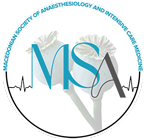About MSA
30 YEARS ASSOCIATION OF DOCTORS IN ANESTHESIOLOGY, REANIMATION AND INTENSIVE TREATMENT (ZLARIL) IN NORTH MACEDONIA
Our origins
The dissolution of the former Yugoslavia was marred by a decade-long series of violent conflicts that ravaged the region from 1991 to 2001. The Socialist Federal Republic of Yugoslavia (SFRY) disintegrated during the 1990s, following the passing of Josip Broz Tito. Tensions escalated as Kosovo Albanians pushed for Kosovo to be recognized as a republic. In 1989 and 1990, the Serbian leadership orchestrated power shifts in Montenegro, Vojvodina, and Kosovo, consolidating control over half of Yugoslavia and securing 4 out of 8 votes in the Yugoslav presidency.
These power maneuvers were followed by military interventions, notably in Slovenia and Croatia, which declared independence in 1991. The conflict intensified in Bosnia and Herzegovina, resulting in widespread civilian casualties. Subsequently, Bosnia and Herzegovina, along with Macedonia, also declared independence in 1991. Notably, the Republic of Macedonia achieved independence without military conflict but was plagued by heightened inter-ethnic tensions during its formation.
Following the inception of the new state, there was a surge of enthusiasm and concerted efforts aimed at securing international recognition. This included endeavors to integrate various professional organizations, such as the physician anesthesiologists, into international associations. In the Yugoslav federation, the Yugoslav Association for Anaesthesiology, Reanimatology, and Intensive Care (JUARIL) operated at the federal level, with each republic hosting its own section of anesthesiologists under the Medical Associations.
Regular congresses were held every three years, supplemented by annual intersectional meetings held in different republics. Noteworthy among these were the intersectional meetings organized by the Macedonian section of anesthesiologists in Bitola, Skopje, and the 4th JUARIL Congress in Ohrid. However, the dissolution of JUARIL became apparent with the conclusion of the 5th Congress in Belgrade in 1989. Subsequently, the atmosphere of impending conflict and disintegration overshadowed the final intersectional meeting in Neum (BiH), which saw diminished participation amidst the palpable sense of the state’s unraveling.
The Transition and Formation
On September 17, 1991, Macedonia formally declared its independence with the signing of the Declaration of Independence. This historic decision came after a successful referendum on September 8 of the same year, affirming the nation’s desire for sovereignty. With independence secured, the formation of the Macedonian army and the establishment of national institutions followed, marking a pivotal moment in the country’s history.
Amidst these changes, organizational structures adapted to reflect the new reality. The former Association of Doctors of Macedonia (ZLM) underwent a transformation, evolving into the Macedonian Medical Association (MLD). This shift extended to its specialist sections, which transitioned into associations representing specific medical disciplines.
In this vein, the Section of Anesthesiologists of Macedonia underwent a significant metamorphosis, emerging as the Association of Physicians for Anesthesia, Resuscitation, and Intensive Care (ZLARIL). This decision was formalized on June 19, 1993, during a meeting held in Kriva Palanka. With the renaming came the acceptance of new work regulations and the supplementation of the management board.
The inaugural management board of ZLARIL comprised esteemed individuals, with Jordan Nojkov serving as president, Zlatko Shuplinovski as secretary, and Zvonko Krstevski as treasurer. Additionally, Marija Sholjakova, Violeta Miloshevska, Zlatko Petrov, and Velcho Stojchevski were appointed as members. Notably, Zvonko Krstevski contributed to the association’s identity by designing its logo, a symbol that endures to this day.
International Affiliation
Professional Development and Engagement
The benefits of our association’s admission to the World Organization of Anesthesiologists were manifold. We gained access to comprehensive notifications of professional events via letters and received approximately 50 copies of the newsletter “World Anesthesia” annually for distribution among our members. In response to a request from the journal’s editor in 1999, I authored a “profile” of our association, detailing the history of our country, the evolution of anesthesiology, specialization methods and programs, commonly utilized anesthesiological techniques, and the landscape of surgical healthcare networks. A slightly modified version of this text was subsequently published in the newsletter of the European Academy of Anesthesiology the following year. These endeavors represented incremental yet meaningful steps in our nation’s quest for international recognition and integration.
Furthermore, during this period, we were regularly invited to attend meetings of the presidents of European anesthesiology societies, typically held in conjunction with the annual gatherings of the German Society of Anesthesiology (AGAI). Our members actively participated in these events, presenting their papers at all major scientific meetings, including world congresses in Sydney (1996), Montreal (2000), Paris (2004), Cape Town (2008), and European congresses in Jerusalem, Frankfurt, Lisbon, Florence, Bermingen, among others. These engagements not only facilitated knowledge exchange but also underscored our association’s growing prominence within the global anesthesiology community.


